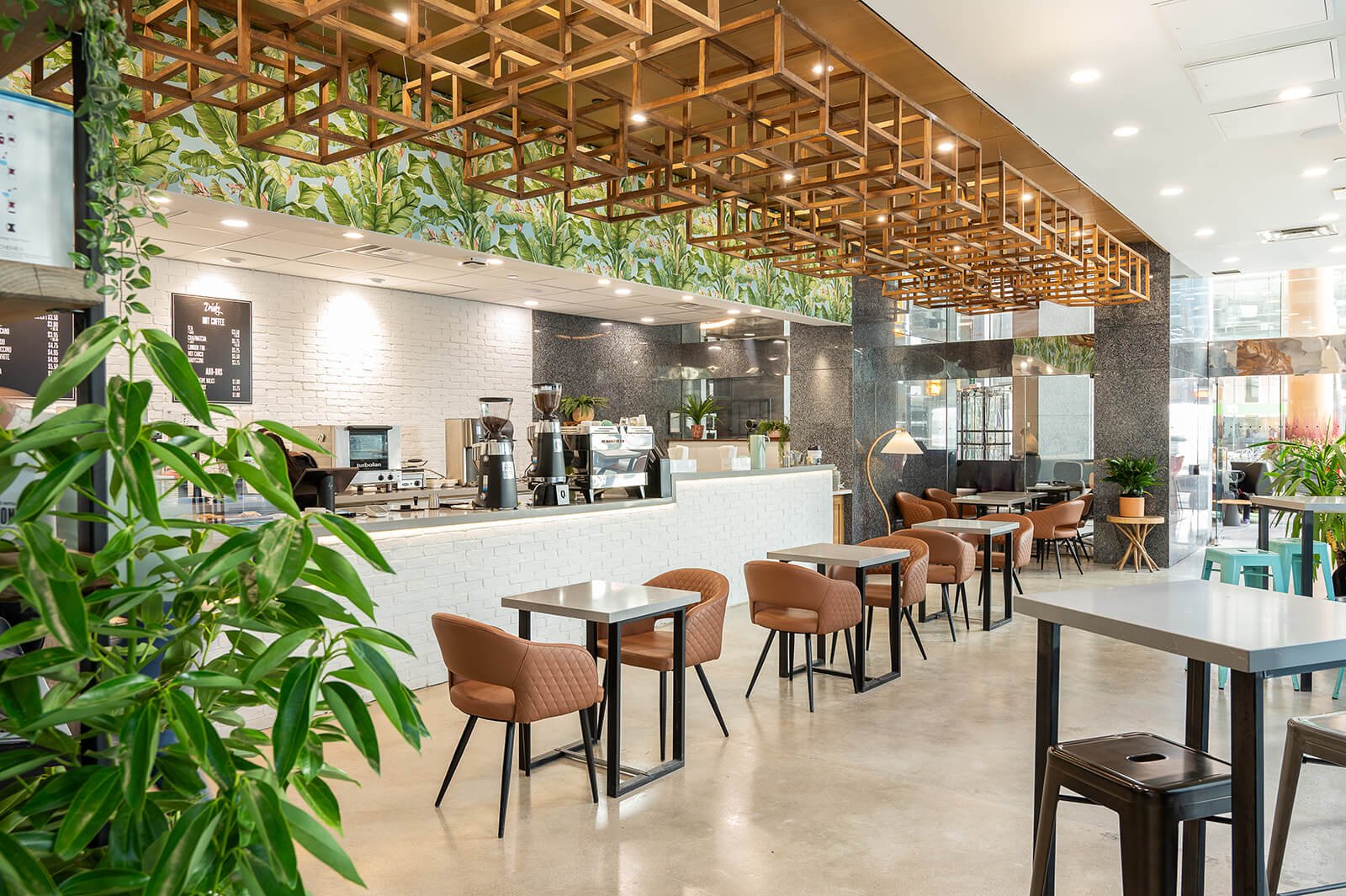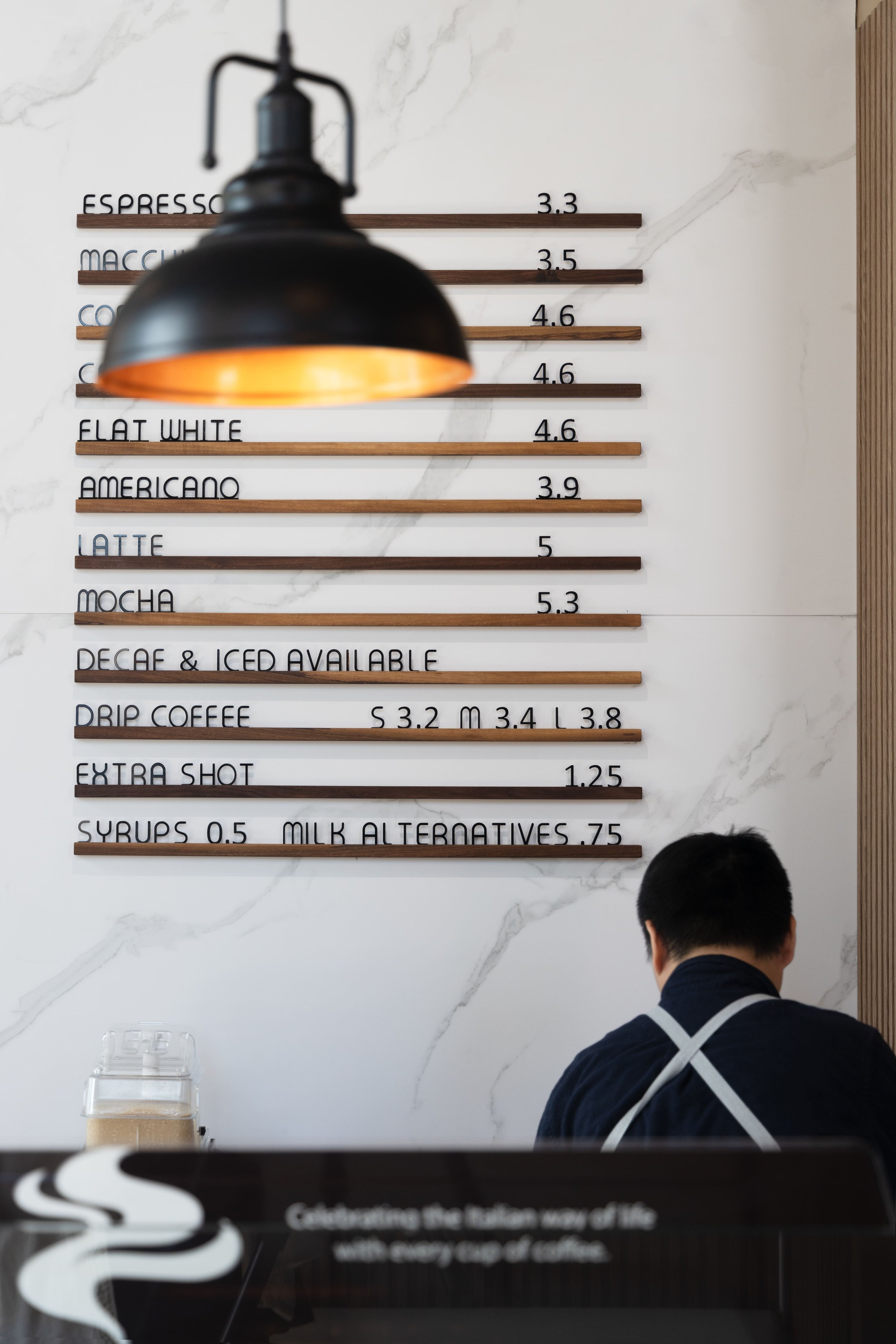Where Beauty Meets Function: Café and Restaurant Design
How to Design Without Compromise
The Design Dilemma
The design of your café or restaurant can make or break your business's success. Most cafés and restaurants either look great but don’t work, or function well but lack the buzz. We want a space that wows people, but it still needs to flow efficiently for staff, maximize seating, and meet code, without constant design revisions or build delays. Thoughtful and intentional design balances functionality with beauty, focusing on optimizing the space and providing lasting impressions on customers.
The Beauty Trap: When Aesthetics Undermine Function
Having a beautiful cafe or restaurant offers an elevated experience for customers. Aesthetics is super important because it prompts people to sit down, have a coffee or a meal, and then go and tell their friends about the amazing experience they’ve had. With a beautiful design, you can be sure to attract a lot of customers, but what happens when those customers are bumping into each other because minimum clearance requirements haven’t been considered early on in the design process? Or when they want to enjoy the experience, but it’s too noisy because the acoustical design has been overlooked? All of a sudden, the café and restaurant that everyone has been raving about turns into an uncomfortable experience that is more likely to push people away than to attract them. Including a design professional early on in the design process can help to avoid these shortcomings and allow your business to thrive.
The Functional Fade: When Efficiency Kills the Mood
On the flip side, a café or restaurant that is designed functionally optimizes revenue per square footage, reduces operational costs, improves workflow for staff, and prevents delays or redesigns due to code violations. All of these elements are essential in creating an efficient restaurant or café, but what will draw people in and keep customers coming back? This is the pressing question, and the answer is to find the balance between beauty and functionality. People are drawn to cafés and restaurants that create an experience for them, whether that’s because the space is vibrant or rejuvenating, that’s up to you! But without a memorable persona, your business is at risk of becoming just another building.
Designing for Duality: The Ideal Café/Restaurant
Striking the right balance between function and beauty is a thoughtful process that involves several key considerations, and every detail plays a role in creating a space that not only looks great but also works seamlessly.
Aesthetic Considerations
Theme: Beauty in design starts with meaning — consider what story you are trying to tell through your design. This story will be the heart of your cafe or restaurant, impacting design decisions made throughout the entire process, and making your space uniquely tailored to you and your brand.
Colour Choices: Choose colours that reflect the theme of your space. Through colour psychology, we know that colours can evoke a wide range of emotions, which is why choosing a colour palette that enhances your design and communicates your story will completely elevate your space. A vibrant colour palette will enhance liveliness and excitement, a dark colour palette will convey mystery and sophistication, while a muted palette will create a calming and relaxed atmosphere. A well-chosen colour palette creates cohesion and can entirely shift the overall mood of your space.
Textiles and Surfaces: Mix textures and materials that enhance the overall feel of your cafe or restaurant. Using soft textures creates a warm and inviting interior space, while sleek materials signal sophistication and modernity. Layering textures and materials in design is an art form in itself, which elevates visual interest and ambience once you’ve found the right balance.
Lighting Design: Consider a balance between ambient, task, and accent lighting to enhance the beauty in the space. Ambient lighting provides overall illumination, offering an even level of light tailored to each interior space. Task lighting is direct lighting that allows us to perform our daily duties. Accent lighting can empower a space by highlighting impressive design features like custom millwork and curated artwork. It’s important to layer these three types of lighting intentionally so that, rather than overpowering each other, they complement one another to transform the space.
Wow Factor: Incorporating elements into a cafe or restaurant that capture attention and reflect your brand creates memorable experiences for customers, keeping them engaged while they’re there and giving them something to look forward to the next time they visit again. This could be accomplished through a feature wall or a ceiling element — the options are limitless, and these “Instagrammable” moments are beautiful and great for branding.
Functional Considerations
Spatial Flow: Understanding how people move through and interact with a space is essential when designing any café or restaurant. This insight helps shape functional circulation paths that feel natural and intuitive, allowing guests and staff to navigate the environment with ease and comfort.
Kitchen Layout: Promoting efficient workflows in a commercial kitchen starts with a strategic layout. By organizing zones according to task, such as preparation, cooking, plating, and cleaning, workers can perform their duties with greater speed and precision. This not only minimizes errors but also supports better time management, contributing to a more seamless and effective kitchen operation.
Space Planning: A well-thought-out floor plan is essential for creating a smooth and enjoyable dining experience. When the layout makes sense, guests can be seated quickly, served efficiently, and have their tables cleared without disruption. It allows staff to move easily between tables, service areas, and the kitchen, minimizing delays and avoiding unnecessary traffic. The key here is to optimize square footage without compromising comfort. This not only boosts the overall efficiency of the space but also helps maintain a relaxed, welcoming atmosphere that keeps guests coming back.
Wayfinding: Clear and thoughtfully placed signage improves the customer experience, especially for those who are new to the space. Whether it’s guiding guests to the order counter, restrooms, or pickup area, well-designed signage eliminates confusion and helps people feel more comfortable and confident navigating the environment.
Sourcing Materials: In high-traffic environments like cafes and restaurants, where surfaces are constantly exposed to spills, heat, moisture, and daily wear, using high-quality and long-lasting materials and finishes ensures that the establishment you’re investing in is built to last.
At Sansa Interiors, we thoughtfully integrate all of these elements, and more, starting in the early stages of each project, because a café or restaurant is only as successful as the design that brings it to life.





